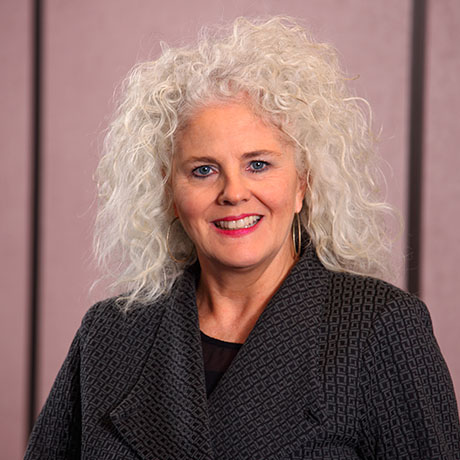When You Should Think About Selling Your Practice
There are many reasons why veterinary practices are put up for sale. Some of the more common reasons actually have little to do with the practice’s general performance. For example, many veterinarians discover that they need to sell for health reasons or personal concerns, such as divorce or partnership issues. While a business downturn might prompt many veterinarians to sell, economic drivers are not the only issue. Owners may want and need to sell, but often it isn’t always that simple.
Many veterinarians are looking to retire but are unpleasantly surprised to learn that they simply can’t afford to do so. Still yet, many veterinarians don’t truly want to retire or sell, but instead, they just want more freedom in their lives. The day-to-day responsibilities of owning and operating a practice can take their toll. Many veterinarians are looking to make a change and would love to be free of this burden. This class of owner has already “checked out” mentally, and this can have profound negative consequences for their businesses.
When a veterinarian wants out but discovers that he or she simply can’t afford to sell or retire, it will come as no surprise that there is usually an accompanying drop off in enthusiasm. Ultimately, the vast majority of practice owners will start to lose focus. Often, we find that they stop investing the capital necessary to continue the growth of the business, which can trigger other events, such as the loss of key staff members and/or customers. The failure of the practice to maintain its footing and competitive advantage can lead to a more aggressive posture by existing competitors or even encourage a new competitor to move into the market.
In time, the practice owner may come face-to-face with the harsh realization that they have no choice but to sell if they are to salvage any of the practice’s value. The best way for a practice owner to safeguard against this situation is to sell when his or her practice is doing well, as this helps to ensure an optimal price.
Working with a practice broker, even years before one is interested in selling, is one of the single smartest moves any business owner can make. The time to think about selling your practice is now, as no veterinarian knows what life or the market will bring.
To help figure out where to start, contact us today – phone: 877-866-6053 or email: info@omni-pg.com.
Read MoreSelling Real Estate with Your Dental Practice
Megan Urban, Transition Advisor at Omni Practice Group, gives some advice for anyone who is unsure if they should sell their real estate along with their dental practice.
Read MoreWhen You Should Think About Selling Your Practice
There are many reasons why dental practices are put up for sale. Some of the more common reasons actually have little to do with the practice’s general performance. For example, many practice owners discover that they need to sell for health reasons or personal concerns, such as divorce or partnership issues. While a business downturn might prompt many dentists to sell, economic drivers are not the only issue. Owners may want and need to sell, but often it isn’t always that simple.
Many dentists are looking to retire but are unpleasantly surprised to learn that they simply can’t afford to do so. Still yet, many dentists don’t truly want to retire or sell, but instead, they just want more freedom in their lives. The day-to-day responsibilities of owning and operating a practice can take their toll. Many dentists are looking to make a change and would love to be free of this burden. This class of owner has already “checked out” mentally, and this can have profound negative consequences for their businesses.
When a dentist wants out but discovers that he or she simply can’t afford to sell or retire, it will come as no surprise that there is usually an accompanying drop off in enthusiasm. Ultimately, the vast majority of practice owners will start to lose focus. Often, we find that they stop investing the capital necessary to continue the growth of the business, which can trigger other events, such as the loss of key staff members and/or customers. The failure of the practice to maintain its footing and competitive advantage can lead to a more aggressive posture by existing competitors or even encourage a new competitor to move into the market.
In time, the practice owner may come face-to-face with the harsh realization that they have no choice but to sell if they are to salvage any of the practice’s value. The best way for a practice owner to safeguard against this situation is to sell when his or her practice is doing well, as this helps to ensure an optimal price.
Working with a practice broker, even years before one is interested in selling, is one of the single smartest moves any business owner can make. The time to think about selling your practice is now, as no dentist knows what life or the market will bring.
To help figure out where to start, register for one of our upcoming webinars or contact us today – phone: 877-866-6053 or email: info@omni-pg.com.
Read MoreTransition Announcement and Patient and Team Retention
 By Megan Urban, Practice Transition Advisor
By Megan Urban, Practice Transition Advisor
In my experience, sellers get concerned with the “correct” time to tell their team about the transition. We recommend informing them when all documents or some are signed and there is no doubt the sale will go through. It may be 2 weeks or 2 days before closing, it depends, and your transition advisor will assist you.
If you tell your team too early, they may become stressed, confused, and unsure of their future, so they may panic and find another job and possibly tell patients. None of this is good! Your team and patients are important to the goodwill of your practice.
When you do announce the new buyer, remind the team that they love their teammates and patients and that isn’t changing. Explain a bit about the new dentist and schedule time for them to meet. Help them feel confident that the transition will be great, and the new dentist will need their assistance for everyone to be successful.
A letter to patients is typically sent from the seller with the buyer’s approval. Depending on both the buyer and seller and the unique area, a newspaper ad can be placed, and an open house can be scheduled. Your transition advisor will provide ideas and examples to help you choose the best method for announcing the transition.
Patients may be unsure of the new buyer, so consider not making any abrupt changes, such as incomplete treatment and payment options. You can’t underdiagnose or discourage ideal treatment but be aware of a way to communicate based upon the previous owner to retain as many patients as possible and still bring in your processes and protocols.
The new team will be concerned about the new buyer’s expectations so consider not changing much in the practice for a while, so they have a chance to transition and become comfortable. Provide information they won’t know such as how to schedule and what instruments you need for each procedure. Help everyone to be successful in their position.
Remember to remind your team often that everything is ok. Consider having one-on-one meetings with each new team member and ask specific questions. “What keeps you coming here every day? What’s one thing you would change in the practice if you could? Can I count on you to bring questions and concerns to me rather than involve the entire team?”
Transitions can be stressful. Work with your transition advisor that has many experiences and ideas to share to help everyone be successful.
Read MoreHow to Determine the Selling Price of Your Practice
Want to know how you can determine the selling price of your practice? Do you know why it is smart to hire dental practice brokers?
Watch the eighth episode of the Dental Marketing Podcast with Chris Pistorius, Founder & CEO of Kickstart Dental, and Megan Urban – Dental Broker at Omni Practice Group, to get your answers!
Read More
